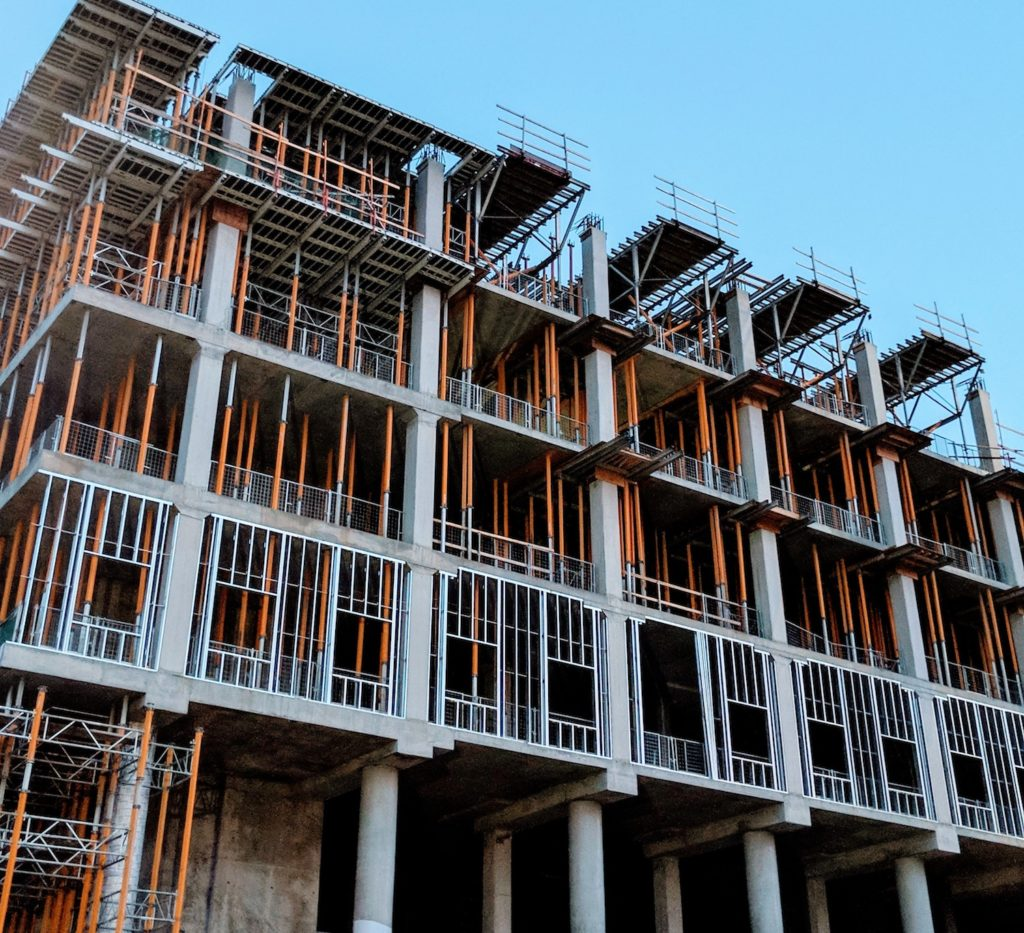Commercial construction projects are daunting and complex, and unless you’re an industry expert contractor with years of experience, it’s not easy to know the ins and outs of what your construction team is talking about.
However, before you even decide on a commercial construction team for your next project it’s important to really understand the terminology that the professionals use. Make sure you bookmark this list — while it doesn’t include everything, it’s a comprehensive resource.
If there’s something on the list that you wish to talk more about or want to address something that we left out, get in touch with our team of commercial construction professionals.
The Planning Process
Usable square footage within a physical space (measured from finished wall to finished wall).
Written clarification or modification of bidding contracts. Issued by the owner to the contractor, addenda become part of the contract documents.
A report listing details about geotechnical and utility infrastructure, cost estimating including construction costs, project management fees, financing requirements and investigation into any issue that will impact the outcome of a project.
Square footage that includes all unusable space within a building, ie: corridors, custodian closets, inside walls, utility spaces, etc.
The Design Process
Detailed plans indicating how to construct the physical spaces of a building.
A third-party review of plans and specifications to ensure accuracy and proper detail of the construction documents.
Sustainable design through the use of materials, construction practices, efficient building design, etc.
Further developed plans showing physical spaces and attributes such as doors, windows, walls, etc.
Conceptual plan showing locations of program space at scaled size.
A detailed, exact statement of particulars, especially statements prescribing materials and methods.

The Construction Process
Contract drawings marked up to reflect changes made during the construction process.
Invitation to bid, instructions to bidders, the bid form, and the proposed contract documents including any acknowledged addenda issued prior to receipt of bids.
Elements of a building which enclose conditioned spaces through which thermal energy may be transferred or the building’s outer shell.
A written document signed by the owner and the contractor authorizing a change in the work or an adjustment in the contract.
The set of activities that must be completed on time for the project completion date to be met without any slack time.
An approximation of the expected cost to complete the work/project as outlined in the scope of work.
A section of the contract by the owner stipulating the contractor’s minimum acceptable performance requirements.
The agreed-upon maximum price between the for the project based on the contract documents.
A written notice issued by the owner to notify concerned parties that all work on the project has been completed.
The person that coordinates and facilitates the project and project sponsors’ goals in accordance with the contract.
An RFP is a solicitation made in the procurement of a commodity, service or valuable asset, to potential suppliers to submit business proposals.
A written statement that defines the actual work to be done.
An agreement between the owner and the contractor — payment is based on the contractor’s actual cost for labor, equipment, materials, and services plus a fixed add-on amount to cover the contractor’s overhead and profit.
The Accounting Process
The distribution of funds from one account to one or more accounts or appropriations.
The movement of budget dollars from one financial unit to another.
The pattern of income and expenditures, as of a company or person, and the resulting availability of cash.
An expenditure made for or on behalf of another governmental unit, fund, or department, or for a private individual, firm, or corporation which will subsequently be recovered in cash or its equivalent.
Funds spent on completing a project. Project cost includes construction costs.
Request required when purchasing materials, equipment or supplies from a vendor.
The form required when the final invoice amount differs from the Purchase Order (PO) amount.
The post Terms of the Trade: A Commercial Construction Glossary appeared first on G. S. & S. Construction.





